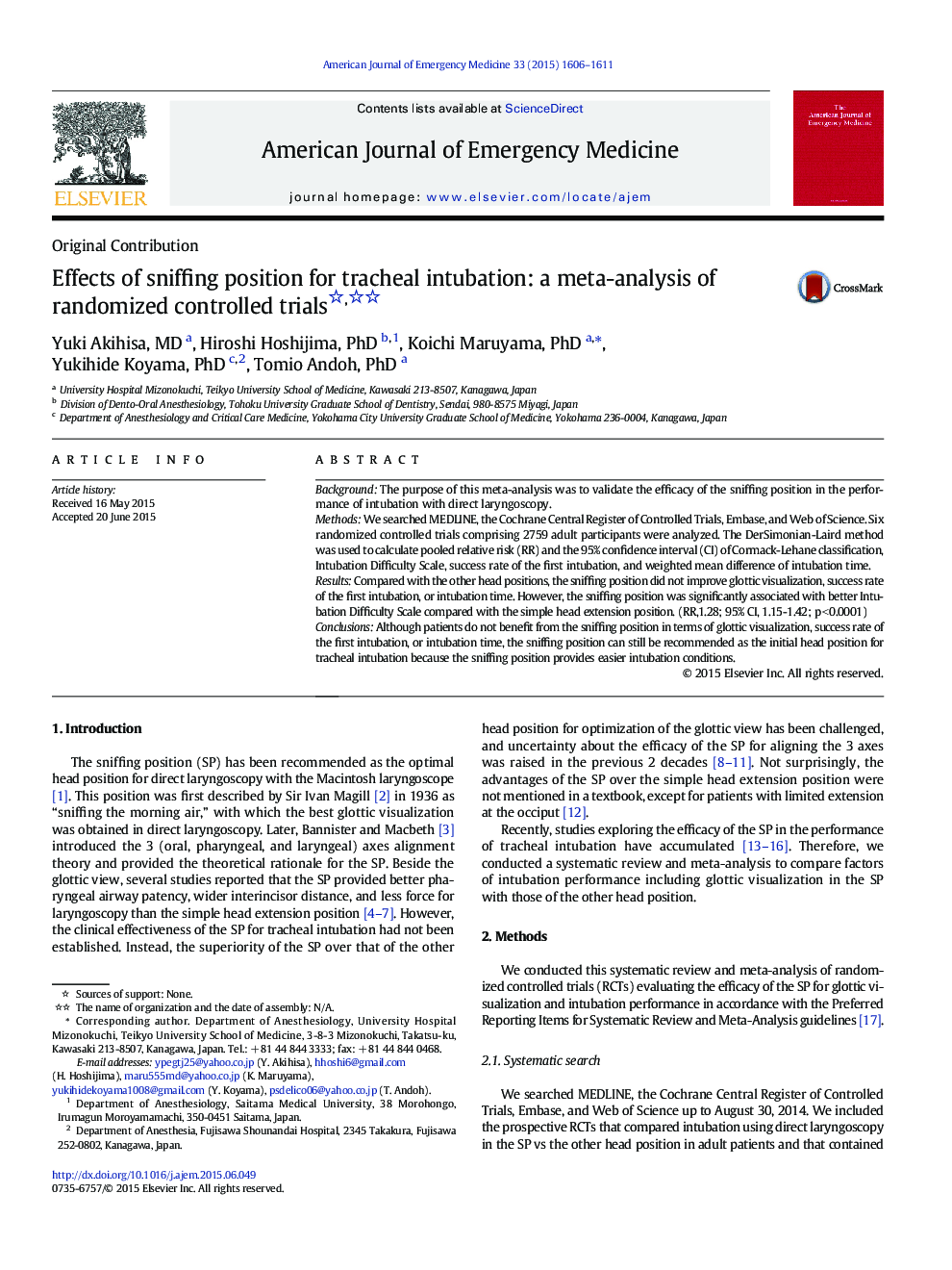| Article ID | Journal | Published Year | Pages | File Type |
|---|---|---|---|---|
| 3223645 | The American Journal of Emergency Medicine | 2015 | 6 Pages |
BackgroundThe purpose of this meta-analysis was to validate the efficacy of the sniffing position in the performance of intubation with direct laryngoscopy.MethodsWe searched MEDLINE, the Cochrane Central Register of Controlled Trials, Embase, and Web of Science. Six randomized controlled trials comprising 2759 adult participants were analyzed. The DerSimonian-Laird method was used to calculate pooled relative risk (RR) and the 95% confidence interval (CI) of Cormack-Lehane classification, Intubation Difficulty Scale, success rate of the first intubation, and weighted mean difference of intubation time.ResultsCompared with the other head positions, the sniffing position did not improve glottic visualization, success rate of the first intubation, or intubation time. However, the sniffing position was significantly associated with better Intubation Difficulty Scale compared with the simple head extension position. (RR,1.28; 95% CI, 1.15-1.42; p < 0.0001)ConclusionsAlthough patients do not benefit from the sniffing position in terms of glottic visualization, success rate of the first intubation, or intubation time, the sniffing position can still be recommended as the initial head position for tracheal intubation because the sniffing position provides easier intubation conditions.
